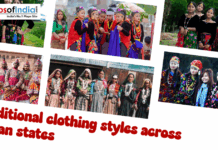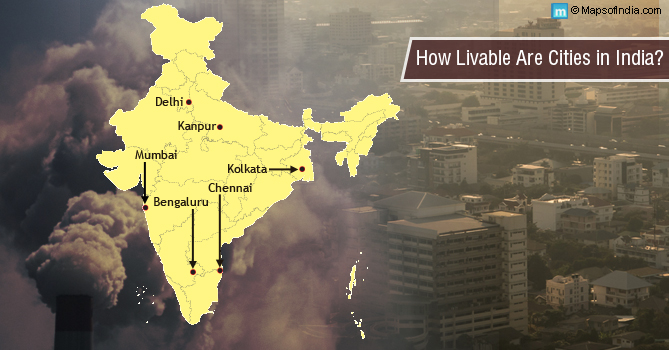 Despite provisions in the Constitution of India and laws prohibiting child labour, it is still an extensive reality in the country. There is no denying the fact that child labour plays a role in contributing to India’s Gross Domestic Product. Surprised? Even I was shocked. I know that child labour is thriving in the country but I was not aware of the fact that it contributes to the country’s GDP. The reason being, they work in some of the major industries in the country like carpet making, silk industry, firecracker units, restaurants and the diamond industry. Child labour is extensively employed, especially, in diamond industry.
Despite provisions in the Constitution of India and laws prohibiting child labour, it is still an extensive reality in the country. There is no denying the fact that child labour plays a role in contributing to India’s Gross Domestic Product. Surprised? Even I was shocked. I know that child labour is thriving in the country but I was not aware of the fact that it contributes to the country’s GDP. The reason being, they work in some of the major industries in the country like carpet making, silk industry, firecracker units, restaurants and the diamond industry. Child labour is extensively employed, especially, in diamond industry.
Why children are preferred in diamond industry?
Diamond cutting and polishing require perfect precision and the skill required for doing this is passed on from generation to generation among the workers’ families or picked up in the traditional hands-on training from master to apprentice. Nature determines the first three aspects of the four Cs — colour, clarity and carat – of the diamond, but the 4th C, that is, the cut of the diamond, depends on human hand. The cut of the diamond is considered to be the main factor in judging the stone’s beauty and price. Thus, it is the worker’s sharp eyesight and his deft hands that give the final shape, ie cut, polish and brilliance, to the otherwise rough diamond stones. Children are considered more suitable in this. They are sharp in sight and have steady hands. They can cut the stones much more quickly and accurately than an adult worker. This is one of the reasons why child labour is employed comparatively on a larger scale in the diamond industry.
Today, the country enjoys a near-monopoly in diamond cutting, where 90 per cent of the word’s diamonds are cut. The major factor contributing to the profitability of the industry is the low wages and easy availability of labour. There is clear evidence that as the diamond industry has grown, it has also attracted more and more poor rural families to move into cities and often the whole families end up working in the industry.
Working conditions in diamond industry
The world’s biggest diamond and gemstone cutting centre is India and diamond is also one of the biggest export earners of the country, constituting almost around 80 per cent of the total export value of gems and jewellery. One main reason for the explosive growth in this industry is the availability of cheap labour. The diamond industry is a highly labour intensive industry because of the detailed nature of the work and the continuous strain of polishing and cutting these stones.
It is also an unhealthy working environment inside the factories. The factory rooms are congested, poorly ventilated and poorly lit. The ground diamond creates a lot of dust in the crowded rooms and proves harmful for the health of the workers. Children suffer from body ache and their finger tips get scraped by the polishing and cutting of stones. Most of the workers, including the children, suffer from health problems like headache, eye strain, leg and shoulder pain, tooth decay, dysentery etc. The children, generally boys between 10 and 14 years of age, work for seven to nine hours a day.
Major centres of diamond industry
The major diamond cutting and producing centres in India are Surat, Jaipur and Mumbai. Surat in Gujarat is the main cutting and polishing centre for diamonds in the world. It was disclosed in a report that in Surat’s diamond factories, children, generally boys of 12-14 years old, polish diamonds for long hours in unhealthy conditions. In Jaipur, there are two categories of children working in the diamond and gem industry. One category consists of children from 6 to 10 years old, working from 8 in the morning to 6 in the evening, belonging to manual labourers’ families and poorly paid people. These children are illiterate. In the second category, there are children in the age group of 10 to 14 years belonging to families with some steady income. These children go to Government schools and work about 5 hours a day after school. The job of diamond cutting is reserved for poor workers, whose families come to the city for better jobs, it was found. The diamond factories that employ them receive the uncut diamonds from distributors and they work on a commission basis for the merchant while the labourers are given fixed, low wages. Only a few are processed in larger factories.
Legal framework and NGOs
According to Article 24 of the Constitution, no child (below 14 years) should be employed in any factory, mine or any hazardous employment. Article 21A of the Constitution also declares that all States should provide free and compulsory education to children between 6 and 14 years of age. Child Labour (Prohibition and Regulation) Act was enacted in 1986, to prohibit employment of children below 14 years in hazardous employment. In 1987, a National Policy on Child Labour was announced which focussed on the need for enforcement measures in areas of high concentration of child labour. In 1991, the International Labour Organisation (ILO) launched the International Programme for Elimination of Child Labour (IPEC) to contribute to the abolition of child labour in the whole world and India was the first country to sign the MOU in 1992. We also have the Factories Act of 1948, the Mines Act of 1952, the Juvenile Justice (Care and Protection) of Children Act of 2000 and the Right of Children to Free and Compulsory Education Act of 2009, all formulated for the cause of the children.
Also a number of NGOs in the country have come forward to help abolish child labour in the country. Nobel laureate Kailash Satyarthi had launched Bachpan Bachao Andolan (BBA) in 1980 with an objective to make all children free from exploitation and receive free and quality education. His NGO has rescued more than 82,000 child and bonded labourers. We have NGOs like CRY India, Save the Childhood Foundation, Save the Children and many more which work to create and promote awareness about child rights and right to education and elimination of child labour.
To Sum Up: In spite of laws and regulations, India is home to the largest number of child labourers in the diamond industry. Most of the workers are not protected by India’s Factory Act, and there is little or no enforcement of the Child Labour Act. The Indian Government has already listed this industry as one of the most hazardous in the country where even six-year-olds are found cutting diamonds. It is also found that in India, many of these children are found trapped in debt bondage.
But child labour in any form or in any industry is a crime and should be totally abolished. However, it cannot be eliminated overnight. One main cause of child labour is poverty. Most parents of child labour do not favour its abolition. The families themselves force their children to work for an additional income.
It is time that more and more strict measures are taken by the Government so that thousands of crores of rupees earmarked for poverty alleviation reaches the actual targeted groups. Effective measures must be taken so that the families of the child labourers in the diamond industry get the benefits of poverty alleviation programmes due to them.
Read Also:
Child safety in India
Amendments in the Child Labour Law
Is Your Child Obese?
Sukanya Samriddhi Account: New Scheme for a Girl Child in India
Child Labour in Sivakasi Fireworks Industry
Child Trafficking in India
Employment of Children in Mines
Child labour in India
Beti Bachao Beti Padhao Scheme
Stop Female Foeticide – Save the Girl Child
How to improve the position of girl child in the rural areas of India
Child abuse in India
Child Marriage in India
Life of Street Children in India
Children Safety and Disaster management in schools





